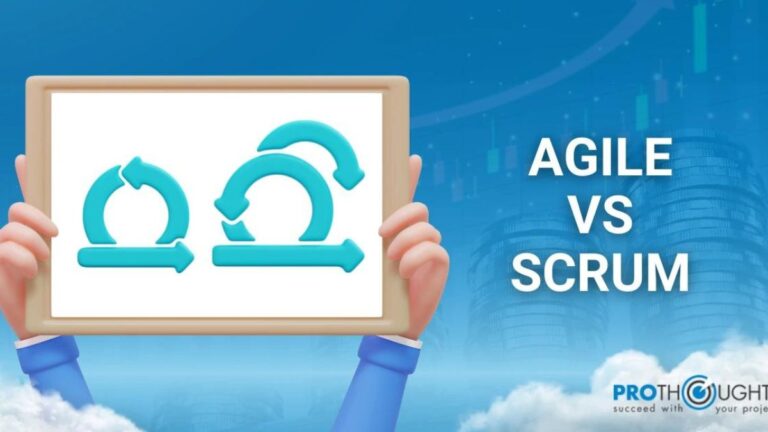Agile and Scrum have revolutionized project management by promoting iterative development, flexibility, and customer collaboration. However, classic Agile approaches may run into problems as projects get more complicated. Disciplined Agile (DA) provides a complete framework that combines the structure of Scrum with the flexibility of Agile in this situation. In this post, we’ll look into how you may improve your project management procedures by utilizing the power of Disciplined Agile Scrum Master (DASSM) certification.
What Is Agile?
Agile project management is a business concept that aims to maximize the value of the product to be generated, increase customer satisfaction, and adapt to changes in a highly unpredictable business environment. Organizations must comprehend this reasoning and use tangible instruments to turn the philosophy into a process in order for it to be put into practice.
Agile is a methodology founded on concepts. Agile seeks to provide the client with greater levels of innovation and value in addition to improved performance (in terms of cost, time, and quality) by streamlining, extending flexibility, and iterating the project management process. Thus, it is a method of thinking about project creation that prioritizes flexibility and speedy project execution together with cooperation and client loyalty.
As a result, several Agile frameworks have been developed to explain how to apply the Agile Manifesto’s tenets in everyday situations. They incorporate agile concepts into an organization or project using a framework or a particular technique. Scrum is among the most well-known of them. One way to look at increasing team productivity is through agility.
What is Scrum?
Scrum is an agile framework that enables individuals to collaborate on challenging and flexible projects and produce high-quality, innovative, and productive results. An aspect of the agile mentality is scrum. That implies that it eventually adheres to the same tenets.
The self-directed team is the foundation of Scrum. This team follows the roles, values, artifacts, and enabling technologies of Scrum. If the Scrum team were a car, the product owner would be the transmission, the engine oil would be the engine and other transmission organs that allow the engine and other organs to run smoothly, the instrument panel would be the signals, and the windshield wipers would be the scrum master. This analogy would apply to the development team as well.
Agile vs Scrum
Most people think that Scrum and Agile can be used interchangeably. But that is not true. Agile is a general term that covers a variety of methodologies with shared core principles and concepts. On the other hand, Scrum is a popular Agile methodology that offers suggestions for improving work organization for the advantage of end users.
Scrum is mostly used for product development teams, whereas Agile focuses on the entire organization, including leadership and corporate culture. Many firms structure their teams using Scrum in conjunction with other Agile concepts and practices. Scrum may seem very simple to execute, yet it requires significant organizational and human adjustments. It’s also essential to fully actualize Agile’s transformational potential. Therefore, it is not Agile Vs Scrum, but rather Agile AND Scrum.
How To Get the Best Of Agile And Scrum In Your Projects?
Although Scrum and Agile are very successful for a lot of projects, they might be difficult to use in bigger organizations or on projects with a wide range of stakeholders. There may be problems with governance, scalability, and interaction with current procedures. With its practical approach to Agile delivery, Disciplined Agile offers direction on how to customize and expand Agile methods to fit the particular requirements of your project and business. It covers all aspects of the value stream, including operations, finance, IT, and more, and goes beyond software development. A few benefits of Disciplined Agile are its scalability, adaptability, and emphasis on results rather than just outputs. It offers a toolset of techniques, procedures, and advice to assist businesses in navigating challenging conditions and successfully completing their objectives.
Disciplined Agile recognizes the importance of cross-functional teams and clear organizational roles. It guides structuring teams, defining roles and responsibilities, and fostering collaboration across different functions. DA defines a set of process goals that organizations should strive to achieve, such as delivering high-quality solutions, optimizing flow, and continuously improving. It offers various lifecycles, including Agile, Lean, and Exploratory, to cater to different project contexts. Therefore, it is not like any other existing Agile Certification. One of the critical principles of Disciplined Agile is “Choose Your WoW” (Way of Working), which emphasizes the importance of tailoring Agile practices to suit the specific needs of each project or organization. It guides scaling Agile practices across multiple teams and managing dependencies effectively.
You can, therefore, leverage the best of Agile and Scrum with DA! Start your journey with Disciplined Agile Scrum Master (DASSM) certification today!
Conclusion
In conclusion, Disciplined Agile offers a robust framework for organizations looking to maximize the benefits of Agile and Scrum in their projects. By providing guidance on tailoring and scaling Agile practices, integrating with existing processes, and focusing on outcomes, DA enables organizations to navigate complexity and achieve their goals more effectively.
